Refine search
Actions for selected content:
259 results
Chapter 9 - Mandates and the Termination of Mediation
-
- Book:
- The Peacemaking Mandate
- Published online:
- 12 September 2025
- Print publication:
- 02 October 2025, pp 221-242
-
- Chapter
- Export citation
Chapter Eight - Uniting Separate Regional Traditions for a Comparative Archaeology of Pastoralism
-
- Book:
- The Archaeology of Pastoralism, Mobility, and Society
- Published online:
- 04 September 2025
- Print publication:
- 18 September 2025, pp 319-331
-
- Chapter
- Export citation
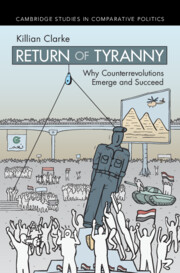
Return of Tyranny
- Why Counterrevolutions Emerge and Succeed
-
- Published online:
- 17 September 2025
- Print publication:
- 23 October 2025
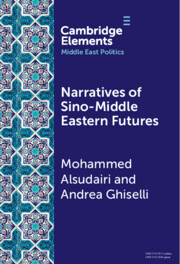
Narratives of Sino-Middle Eastern Futures
- In the Eye of the Beholder
-
- Published online:
- 08 August 2025
- Print publication:
- 21 August 2025
-
- Element
-
- You have access
- Open access
- HTML
- Export citation
The “Millet” Paradigm: On Difference in the Late Ottoman Empire
-
- Journal:
- Comparative Studies in Society and History , First View
- Published online by Cambridge University Press:
- 07 August 2025, pp. 1-27
-
- Article
-
- You have access
- Open access
- HTML
- Export citation
Death of the Gharīb: A Window towards a Regional Understanding of Displacement in the Middle East
-
- Journal:
- Comparative Studies in Society and History , First View
- Published online by Cambridge University Press:
- 17 July 2025, pp. 1-24
-
- Article
-
- You have access
- Open access
- HTML
- Export citation
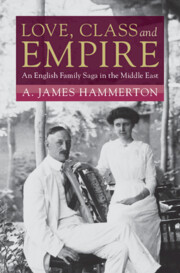
Love, Class and Empire
- An English Family Saga in the Middle East
-
- Published online:
- 10 July 2025
- Print publication:
- 04 September 2025
The diversity of Khawia tapeworms (Cestoda: Caryophyllidea) of barbels (Cyprinidae: Barbinae) in the western Palearctic: the existence of vicariant lineages and the description of a new species from the Iberian Peninsula
-
- Journal:
- Parasitology / Volume 152 / Issue 6 / May 2025
- Published online by Cambridge University Press:
- 16 June 2025, pp. 618-631
-
- Article
-
- You have access
- Open access
- HTML
- Export citation
Legislative Cooptation in Authoritarian Regimes: Policy Cooperation in the Kuwait National Assembly
-
- Journal:
- British Journal of Political Science / Volume 55 / 2025
- Published online by Cambridge University Press:
- 14 May 2025, e72
-
- Article
-
- You have access
- Open access
- HTML
- Export citation
The Islamist Advantage: The Religious Infrastructure of Electoral Victory
-
- Journal:
- British Journal of Political Science / Volume 55 / 2025
- Published online by Cambridge University Press:
- 02 April 2025, e56
-
- Article
-
- You have access
- Open access
- HTML
- Export citation
Bronze Age cymbals from Dahwa: Indus musical traditions in Oman
-
- Article
-
- You have access
- Open access
- HTML
- Export citation
A meta-analysis on Dirofilaria immitis and Dirofilaria repens in countries of North Africa and the Middle East
-
- Journal:
- Parasitology / Volume 152 / Issue 4 / April 2025
- Published online by Cambridge University Press:
- 01 April 2025, pp. 347-365
-
- Article
-
- You have access
- Open access
- HTML
- Export citation
Identifying the preserved network of irrigation canals in the Eridu region, southern Mesopotamia
-
- Article
-
- You have access
- Open access
- HTML
- Export citation
The first pottery in the Arabian Gulf: origins, production and distribution
-
- Article
-
- You have access
- Open access
- HTML
- Export citation
Introduction
-
- Book:
- Mobile Manuscripts
- Published online:
- 30 January 2025
- Print publication:
- 06 February 2025, pp 1-38
-
- Chapter
-
- You have access
- HTML
- Export citation
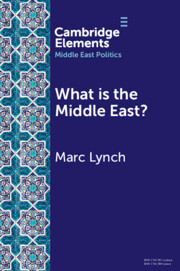
What is the Middle East?
- The Theory and Practice of Regions
-
- Published online:
- 03 February 2025
- Print publication:
- 20 February 2025
-
- Element
- Export citation
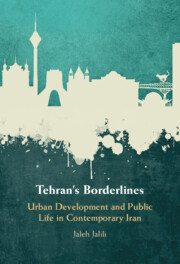
Tehran's Borderlines
- Urban Development and Public Life in Contemporary Iran
-
- Published online:
- 30 January 2025
- Print publication:
- 06 February 2025
Introduction
-
- Book:
- The Last Caravan
- Published online:
- 09 January 2025
- Print publication:
- 23 January 2025, pp 1-38
-
- Chapter
- Export citation
6 - Conclusion
-
- Book:
- The Last Caravan
- Published online:
- 09 January 2025
- Print publication:
- 23 January 2025, pp 259-263
-
- Chapter
- Export citation
Turbulent Takeoff—Hard Landing: State-Airline Relations and the Challenges of Early Commercial Aviation in Iran, 1923–1932
-
- Journal:
- Enterprise & Society / Volume 26 / Issue 3 / September 2025
- Published online by Cambridge University Press:
- 15 January 2025, pp. 1085-1111
- Print publication:
- September 2025
-
- Article
-
- You have access
- Open access
- HTML
- Export citation
